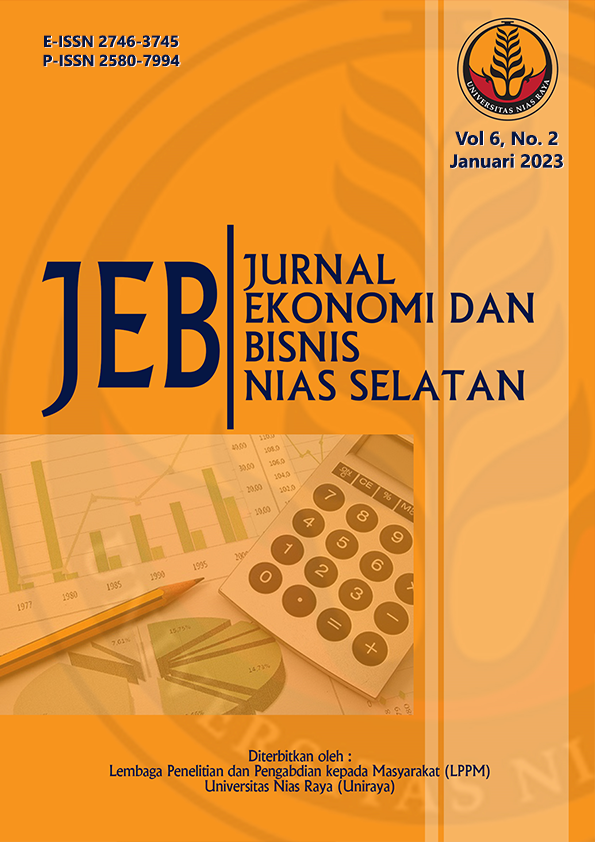Determinan Nilai Tukar Rupiah di Indonesia
Abstract
This study aims to analyze the effect of reports, foreign exchange reserves, inflation, and the money supply on the Rupiah exchange rate in Indonesia. The data used in this study is time series data for the period 2007 – 2021. This research uses the Ordinary Least Square (OLS) method. The results of the study show that simultaneously the variables of exports, foreign exchange reserves, inflation, and the money supply all have a positive and significant effect on the Rupiah exchange rate in Indonesia. Partially, it shows that the export, inflation, and money supply variables have a positive and significant effect on the Rupiah exchange rate in Indonesia. Meanwhile, the foreign exchange reserve variable has a negative and significant effect on the Rupiah exchange rate in Indonesia. The results of the coefficient of determination show the presence of R2 = 0.964046. This explains that the effect of exports, foreign exchange reserves, inflation, and the money supply on the Rupiah exchange rate in Indonesia is 96.4046% and the other 3.5954% is influenced by other variables besides exports, foreign exchange reserves, and the money supply.
Keywords: Exchange Rate, Exports, Foreign Exchange Reserves, Inflation, and the Money Supply.











